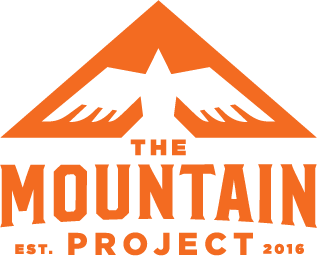Transitioning from Skiing to Running: Tendon Adaptation with Dr. Amy Pakula
What do you mean that I need to ease back into running? I’ve been crushing it on skis all winter long.
You’ve had a solid nordic and uphill ski season and were diligent in your strength training. Snowy trails are turning to dirt and you’re ready to start transitioning from months of low to no impact sports to the demands of a high impact sport like trail running. You’re feeling fit and ready to start hammering some trail miles, but how do you know how much load your body is ready and capable of handling?
Skiing is great cross training, but skiing is not running. While your cardiovascular system is primed for the task of running from all of the skiing, your tendons had a break from high-impact activity. And, they take time to adapt to the demands of running.
How long? Longer than you might think. A meta-analysis in 2015 found that tendon adaptations may occur in 8-12 weeks; (however, the likelihood of seeing these adaptations seem most likely after longer durations >12 weeks).*
How do I know how much load my body can handle?
A common guideline is to increase volume by no more than 10% a week, but if you’re training for a 100 miler that’s in the fall, you might wonder how you build from zero to the 40+ mile weeks your training plan may require.
This is where hiring a coach can be really helpful. Good coaches, like everyone at TMP, get to know your running, racing and injury history and give you customized plans to properly increase the stress on your body.
Another great resource is Daniel’s Running Formula. I recommend this to patients as the formula takes into account how much time off you’ve taken and your running history, as for more experienced and season runners it can be ok to start at a higher base and add mileage faster.
Can run-specific resistance training (like what you do at The Mountain Project) speed this up?
Running specific resistance training is very helpful and works by applying loads to the muscles and tendons most used during running. The type of programming that TMP uses is key in building a bulletproof lower body but does not necessarily speed up tendon adaptation if you’re transitioning from a season/period of no to low impact training . But, it’s important that resistance training be incorporated to keep our bodies from breaking down from the repetitive movements and high impact of running.
Something like what TMP offers that cycles through heavy resistance and lower reps to lighter resistance and higher reps with a sprinkling of plyometric movements that build in intensity as the weeks progress is an ideal combination and what you should be looking for to complement your run training.
What about strength training, will that take 12 weeks too? Do the same tendon adaptation principles apply?
Yes, tendon adaptations are still in the range of 12 weeks, however if you have been skiing all winter, you have likely been loading those tendons in somewhat similar ways during your winter season. You may be able to ramp up movements like squats and lunges more quickly. It’s really the more rapid and explosive movements that are required for running that we’re focused on with this post. Therefore, if you haven’t been doing any hopping, jumping, plyometric or running activities through the winter, this is what you want to take your time with.
What can I do next ski season to better prepare for the impact of running if I want to ramp up my run training sooner?
There are several options to keep your tendons prepared for the impact and demands of running through the winter. First is the obvious of running a bit through the winter. Even 30 minutes 1-2 times a week is very beneficial. Not into winter running? Jump roping is an excellent alternative! Lastly, keeping some lower body plyometric movements in your winter strength routine (squat jumps, split squat jumps, single and double leg hops like you do in ski conditioning at TMP, etc.) will have your tendons primed for a summer of running.
And a final thought from a PT who works with a lot of TMP athletes, if you’re returning to conditioning at TMP after time away, it’s not necessary and in fact might be a hindrance to your training to walk away from the first few classes feeling like your body went through a meat tenderizer.
While it feels really good to push yourself in the gym, ask yourself what aligns with your goals?
Being really sore for multiple days does not equate to getting a really good workout. Especially if it means that you’re having to modify your training plans for the rest of the week because your body is too sore. It is ok to modify movements and do less than the prescribed workout in the first week or two.
While it feels really good to push yourself in the gym, ask yourself what aligns with your goals? For many the purpose of The Mountain Project is to prepare you for outdoor pursuits and compliment what you do outside, not dig you into a hole because you’re so sore.
-Amy Pakula
*Source: https://pubmed.ncbi.nlm.nih.gov/27747846/About the author:
Dr. Amy Pakula is the owner of Bozeman, Montana-based Momentum Physical Therapy specializing in helping clients recover from back, neck, migraine, and headache pain. As a lifetime runner and skier herself, she also works with many mountain athletes through injury and recovery.
Amy uses holistic evaluations to identify and treat the underlying causes of conditions and strives to provide education-based, highly personalized care and pain treatments to help clients get back to doing what they love to do and feel empowered in the healing process.
Find her on Instagram for tips on injury prevention.




